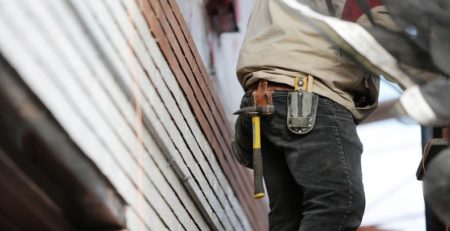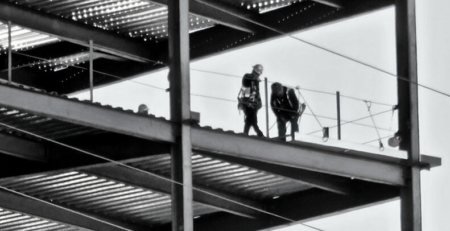Owning Property as Flying Freehold
Owning property is typically either freehold or leasehold. A freehold property is one that is “free from the hold” of a third party and includes both the property and the land on which it stands. Leasehold ownership, on the other hand, refers to owning a lease, a right to live in the property for an agreed time period – typically 99 years – while the freeholder retains ownership of the land it stands on.
Due to communal spaces and shared facilities like gardens, stairwells, and elevators, leaseholds tend to be flats, whereas houses tend to be freeholds.
A flying freehold is something different and refers to property where a part of the building protrudes onto another property that is freehold, either over or under it. The flying freehold property could protrude by way of overhanging or extending onto another freehold property or land. A typical example of a flying freehold property is where a large property has been renovated or converted into a number of smaller freehold properties.
A definition of flying freehold
For semi-detached or terraced freehold properties that do not have a clear demarcation dividing line straight down the middle, from top to bottom, these will be flying freeholds. You can often find, for example, that one of the rooms of a property may be situated over the neighbouring property, and hence there is no clear top-down dividing line between the properties. If a property has a room that extends over a neighbour’s garage, then this is a “flying freehold.” Flying freeholds can also exist with terraced houses that have a shared passageway or alley.
A definition of a creeping freehold
Typically, with older houses, some have cellars that go underneath a neighbour’s property, and the ownership of this type of property is called a “creeping freehold,” as distinguished from the property above the cellar, which is a “flying freehold.”
Freeholds and flying freeholds compared
It is generally understood that a freehold property entails owning the property and land, which also includes everything above or below it. In contradistinction, a flying freehold property entails owning a property that partly overhangs or goes beneath a neighbouring property.
The homeowner’s deeds should state whether a property is a flying freehold, and this is something a buyer will need to know before deciding to go ahead and purchase.

Owners of freehold properties have many benefits of owning the freehold title, but it also comes with the responsibility of full maintenance and repairs. This means that there is no confusion as to who must pay out and is responsible for when something goes wrong.
However, when it comes to flying freeholds, it’s a little different because a property could be reliant on a neighbouring property for structure and support. A kind of symbiotic relationship exists where the maintenance and repair of one building can affect the other.
The legality of flying freeholds
Where neighbouring properties are held in flying freehold, they are each obligated to keep up maintenance and insurance on their side of the property.
If you are looking at buying a flying freehold property and are dependent upon the neighbouring property’s upkeep to safeguard your own, then your conveyancer or solicitor will need to check if there is a positive covenant in place in case legal enforcement is necessary. A positive covenant will be stated in the title deeds and specify what the financial responsibilities are.
Certain issues can arise with neighbouring flying freehold properties and a common one is where renovation work is being carried out on one side and there is disagreement as to the proposed work to be done, such as one side refusing access to their property on the other side.
There are some legal uncertainties when it comes to flying freehold maintenance responsibilities, like, for example, a leaking roof overhanging the neighbouring property, which could potentially cause issues for them.
Are flying and creeping freeholds OK?
If there is an amicable relationship between neighbours and both are willing to do their part in keeping up with maintenance and repair work, then these types of freehold properties should be without issues. If you are looking at buying a flying freehold property, you will want to consult with your lender first to ascertain their stance on them and if they require any special conditions to be met first.
It is very beneficial if flying and creeping freehold properties come with positive covenants that grant rights of access, support, and shelter:
- Rights of support refer to the property being higher up or over another one and having the right of structural support from the property below it.
- Shelter rights work in the opposite direction of support rights, with the higher-up property sheltering the lower-down one. In either case, if there were no rights of support or shelter in place, then if one power tower decided to demolish their building, the other side could be left in dire straits.
- Rights of access: When one property owner needs access to another property to repair or maintain their own, this is referred to as a right of access.If the owner doesn’t have the right of access, then permission will have to be given before the work can be done.
ARE YOU READY TO START INVESTING?
Subscribe to our mailing list now for exclusive deals, investment guides and the latest information from the property market.







